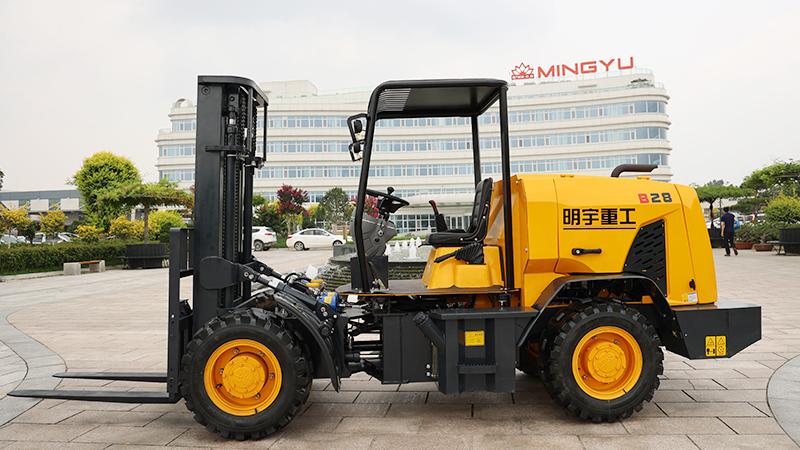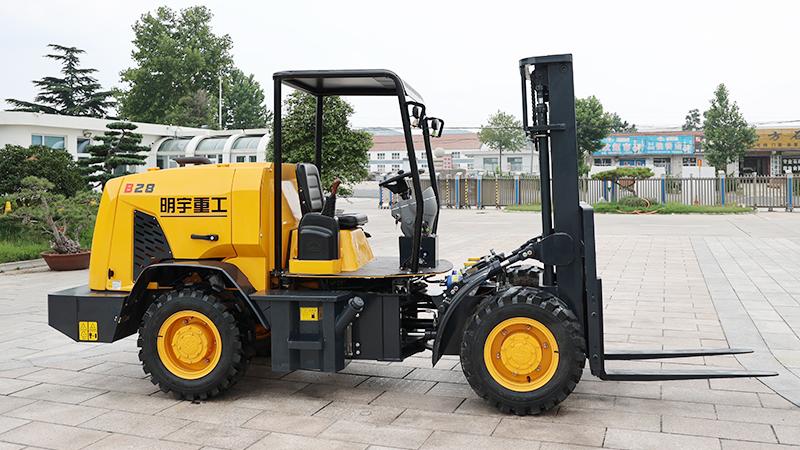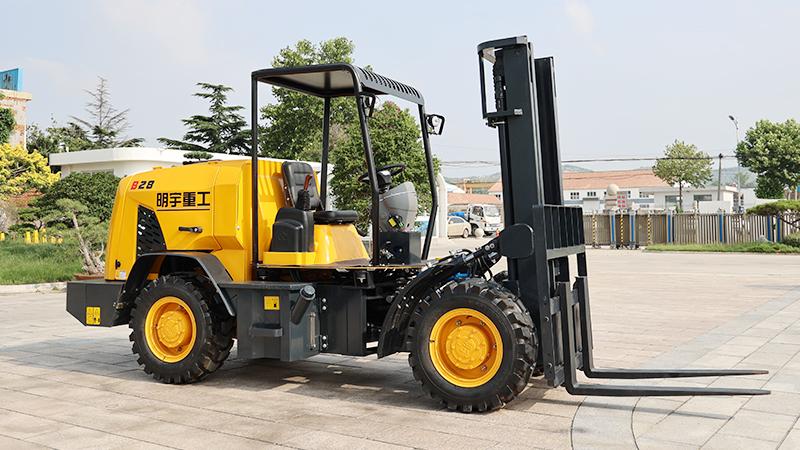The core question of whether an all-terrain forklift can operate on muddy or uneven ground is met with a resounding affirmation, defining the very purpose of this specialized industrial machinery. Unlike their standard warehouse counterparts, all-terrain forklifts are engineered from the ground up to confront and conquer the most challenging landscapes, from sodden, rain-soaked construction sites to rugged, unpaved industrial yards. The fundamental differentiator lies in their robust chassis and, most critically, their sophisticated tire systems. Many are equipped with large, pneumatic tires featuring deep, aggressive treads that act as claws, biting into soft, muddy ground to provide exceptional traction and flotation, preventing the vehicle from sinking. Furthermore, their high ground clearance is a pivotal feature, ensuring the undercarriage remains unscathed when traversing ruts, bumps, and significant irregularities. This inherent capability to maintain stability and forward momentum where other vehicles would falter makes them an indispensable asset for industries such as construction, agriculture, and lumber, where operational deadlines cannot be hostage to adverse ground conditions. The design philosophy prioritizes continuous operation, ensuring that projects remain on schedule regardless of the weather's impact on the terrain, thereby safeguarding productivity and investment.
Beyond the basic tire and clearance advantages, the operational prowess of all-terrain forklifts on uneven and muddy surfaces is significantly amplified by a suite of advanced engineering features. Many modern models are outfitted with a versatile four-wheel drive system, delivering power to all tires simultaneously to maximize grip and pulling force in slippery, low-traction scenarios like thick mud. This is often complemented by a robust suspension system, sometimes with oscillating axles, which allows the wheels to maintain contact with the ground even over pronounced bumps and dips, enhancing both stability for the load and operator comfort. The integration of a limited-slip or locking differential is another critical component, ensuring that if one wheel begins to lose traction in a mud hole, power is automatically redirected to the wheels with solid footing. For the operator, this translates to a machine that feels confident and secure, reducing the risk of load shift or tip-over. When these mechanical systems are combined with a powerful, high-torque engine capable of powering through resistance, the all-terrain forklift transforms from a mere lifting device into a reliable, go-anywhere workhorse, capable of precise material handling in environments that would immobilize standard forklifts.
While the machine's inherent capabilities are vast, the safe and efficient operation of an all-terrain forklift on muddy or uneven ground is also heavily dependent on strategic operational practices and the human element. Prior to entering a challenging area, a competent operator will conduct a thorough risk assessment of the terrain, identifying potential hazards such as hidden trenches, unstable slopes, or areas of particularly deep mud. Adherence to the manufacturer's specified load capacity is even more critical on uneven ground, as an elevated center of gravity can drastically increase the risk of tipping. Smooth, controlled movements are paramount; abrupt steering, braking, or acceleration can lead to loss of traction or load instability. In persistently muddy conditions, selecting a forklift with the correct tire type—such as wider, high-flotation tires—can make a substantial difference. Moreover, comprehensive operator training focused specifically on off-road and adverse condition handling is not just a recommendation but a necessity. This training ensures that the operator can leverage the machine's advanced features effectively, understands the dynamics of load management on slopes, and can make sound judgments to prevent accidents, thereby fully utilizing the engineering investment.
In conclusion, the capability of an all-terrain forklift to operate effectively on muddy and uneven ground is not merely possible; it is its primary design objective. These machines represent a significant technological advancement in material handling, bridging the gap between the orderly warehouse and the chaotic outdoor worksite. The combination of purpose-built physical attributes—large pneumatic tires, high ground clearance, 4WD, and robust suspension—with advanced drivetrain components and a powerful engine creates a solution that defies difficult terrain. When this engineered resilience is paired with a well-trained, vigilant operator who follows established safety protocols, businesses can achieve remarkable levels of efficiency and continuity. Investing in a capable all-terrain forklift, along with proper training, effectively removes "bad ground" as a primary operational obstacle, ensuring that materials keep moving, projects stay on budget, and productivity remains high, rain or shine, on virtually any surface the job site presents.
Post time:Oct.28.2025



